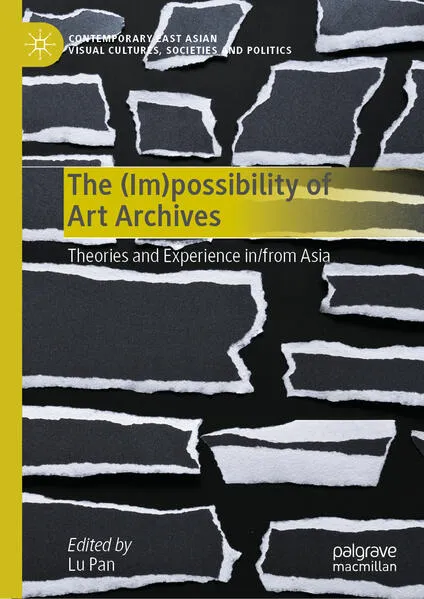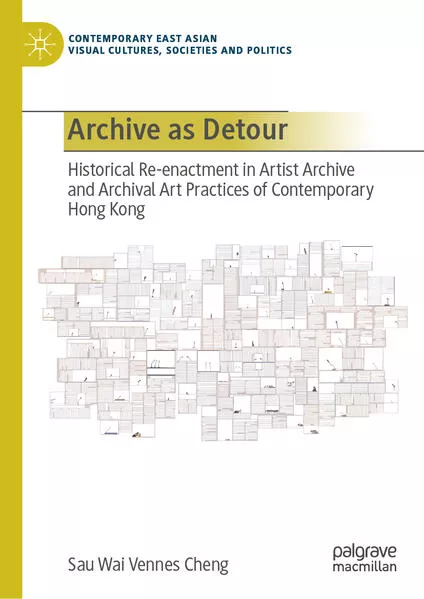Contemporary East Asian Visual Cultures, Societies and Politics
The (Im)possibility of Art Archives
Chronologie aller Bände (1 - 3)
Die Reihenfolge beginnt mit dem Buch "It’s My Party". Wer alle Bücher der Reihe nach lesen möchte, sollte mit diesem Band von Yiu Fai Chow beginnen. Der zweite Teil der Reihe "Archive as Detour" ist am 30.07.2024 erschienen. Die Reihe umfasst derzeit 3 Bände. Der neueste Band trägt den Titel "The (Im)possibility of Art Archives".
- Anzahl der Bewertungen für die gesamte Reihe: 0
- Ø Bewertung der Reihe: 0
- Start der Reihe: 26.11.2023
- Neueste Folge: 04.02.2025
Diese Reihenfolge enthält 3 unterschiedliche Autoren.
- Autor: Chow, Yiu Fai
- Anzahl Bewertungen: 0
- Ø Bewertung:
- Medium: Buch
- Veröffentlicht: 26.11.2023
- Genre: Politik
It’s My Party
This book is unique in focusing on just one band from one city – but the story of Tat Ming Pair, in so many ways, is the story of Hong Kong's recent decades, from the Handover to the Umbrella Movement to 2019's standoff. A comprehensive, theoretically informed study of the sonic history and present of Hong Kong through the prism of Tat Ming Pair, this book will be of interest to cultural studies scholars, scholars of Hong Kong, and those who study the arts in East Asia.
This is an open access book.
- Autor: Pan, Lu
- Anzahl Bewertungen: 0
- Ø Bewertung:
- Medium: Buch
- Veröffentlicht: 06.12.2023
- Genre: Politik
The (Im)possibility of Art Archives
This edited volume aims to fill the gap in the research, juxtaposition, and focused discussions in the existing literature on art archives in Asia. Most of the archives included in the book are independent and initiated by individuals, folk groups, or non-profit organizations. In this book, one can trace the dynamics and self-generative capacity in this particular historical and cultural milieu through these “alternative” archives and through the practices of artists and curators who apply their specific understanding of archive to their works. Many chapters resonate with each other in that they capture the experiences shared by many places in Asia. Those experiences could have resulted from the encounter with the Western idea of archive, the influence of the colonial experience, or a memory crisis triggered by the rapid transformation of media, and may serve as a basis for producing archive theories in/from Asia. The book provides an opportunity for the archives in Asia and those who work around them to recognize one another, understand what their colleagues in archival work do, how they do it and what else there is for them to do.
- Autor: Vennes Cheng, Sau Wai
- Anzahl Bewertungen: 0
- Ø Bewertung:
- Medium: Buch
- Veröffentlicht: 31.07.2024
- Genre: Politik
Archive as Detour
The book brings a new approach to see the art history of Hong Kong as a historical mediator and offers alternative perspective to discern the current hype of archive research and archival art practices, which informs the commitment in the constant production of socio-political meanings through arts. The book addresses the current social-political crises of Hong Kong by connecting art, memory, history, and political participation together through the site of archive and contextualises in both local and global perspectives, it also focuses on the artist archive, namely Ha Bik Chuen Archive, and archival art practices of contemporary Hong Kong, particularly in the social and political unrests, however, it ripples resonance and reflection not only in the local context but also to the region. The book is intended to the readers who are interested in both representational and interpretational nature of art and searching for alternatives means to perceive histories.


